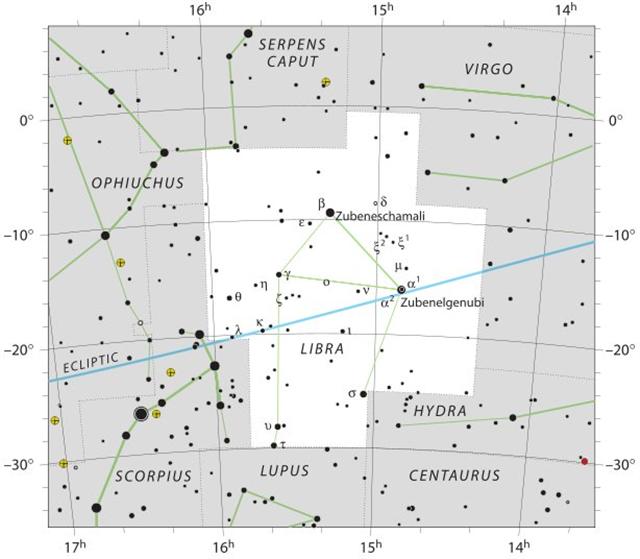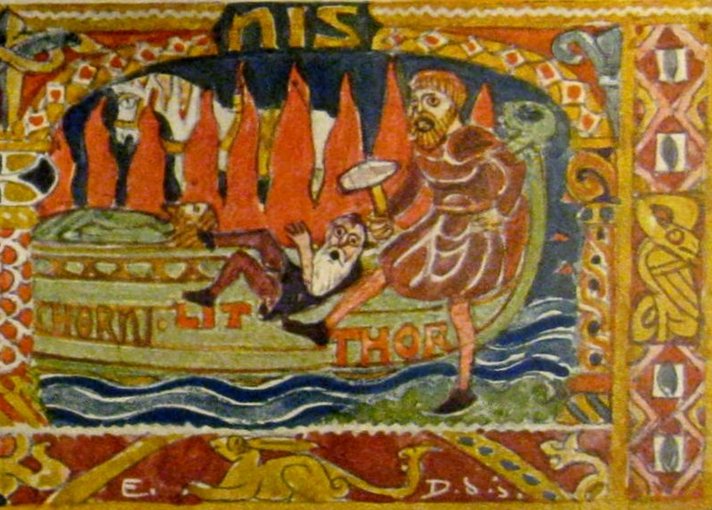What happens next according to the C text?
| Bharani-2 / Stomach-17
π Arietis (41.2), MIRAM = η Persei (41.3), BHARANI = 41 Arietis (41.4), τ² Eridani, σ Arietis (41.7) |
TA LING (Great Mound) = τ Persei (42.4) |
ρ Arietis (43.0), GORGONEA SECUNDA = π Persei (43.5), ACAMAR = θ Eridani (43.6), ε Arietis (43.7), λ Ceti (43.9) DENEBOLA (β Leonis)
|
| April 28 (118 = 4 * 29½) |
29 |
30 (*43 - 3 + 80 = 120) |
 |
 |
 |
| Cb1-12 (404) |
Cb1-13 |
Cb1-14 |
| manu rere - kua rere ga manu - ki te ragi |
eaha te nuku erua |
koia kua huki |
| October 28 (301) |
29 |
30 (*226 - 3 + 80 = 303) |
| Al Zubānā-14a / Visakha-16 / Root-3
ZUBEN ELGENUBI = α Librae (224.2), ξ Bootis, ο Lupi (224.5) |
KOCHAB = β Ursae Min. (225.0) |
KE KWAN (Cavalry Officer) = β Lupi (226.3), KE KWAN = κ Centauri (226.4), ZUBEN ELAKRIBI = δ Librae (226.8), π¹ Oct. (226.9) |
| MENKAR = α Ceti (44.7) |
3h (45.7) GORGONEA TERTIA = ρ Persei (45.1), ALGOL = β Persei (45.9) |
ι Persei (46.1), MISAM = κ Persei (46.2), GORGONEA QUARTA = ω Persei (46.7), BOTEIN = δ Arietis (46.9) |
| May 1 (121) |
2 (*45 - 3 + 80 = 122) |
3 |
 |
 |
 |
| Cb1-15 |
Cb1-16 (408) |
Cb1-17 |
| e niu tu |
ki te ariki - e ka hua ra tona rima |
koia kua iri i ruga o te rima - e o to vaha mea |
| October 31 (304) |
November 1 |
2 (*229 - 3 + 80 = 306) |
|
ω Bootis (227.2), NEKKAR = β Bootis (227.3), π² Oct. (227.7),
NADLAT = ψ Bootis (227.8), π Lupi (227.9) |
15h (228.3) ZUBEN HAKRABIM = ν Librae (228.3), λ Lupi (228.9) |
ω Oct. (229.3), ι Librae (229.6), κ Lupi (229.7), ζ Lupi (229.8) |
| ζ Arietis (47.7) |
ZIBAL = ζ Eridani (48.0), κ Ceti (48.9) |
τ Arietis (49.7) |
| May 4 |
5 (*48 - 3 + 80 = 125) |
6 |
 |
 |
 |
| Cb1-18 |
Cb1-19 (411) |
Cb1-20 |
| manu moe ra |
ki to mata |
e nuku mata |
| November 3 |
4 (*231 - 3 + 80 = 308) |
5 |
| Al Zubānā-14b χ Bootis (230.3), PRINCEPS = δ Bootis (230.6), ZUBEN ELSCHEMALI = β Librae (230.8) |
μ Lupi, γ Tr. Austr. (231.3) |
ο Cor. Borealis (232.0), δ Lupi (232.1), φ¹, ν² Lupi (232.2), ν¹ Lupi (232.3), ε Lupi (232.4), φ² Lupi (232.5), PHERKAD = γ Ursae Min. (232.6), η Cor. Borealis (232.8), υ Lupi (232.9) |
| ALGENIB PERSEI = α Persei (50.0), ο Tauri (50.2), ξ Tauri (50.8) GIENAH (γ Corvi)
|
σ Persei (51.6) |
no star listed (52) |
ψ Persei (53.1)
ACRUX (α CRUCIS)
|
| May 7 (127) |
8 |
9 |
10 (*53 - 3 + 80 = 130) |
 |
 |
 |
 |
| Cb1-21 |
Cb1-22 |
Cb1-23 |
Cb1-24 (416) |
| hoea |
ko te rima |
kua oo ki te vai |
ma te ua |
| November 6 |
7 |
8 |
9 (*236 - 3 + 80 = 313) |
| ALKALUROPS = μ Bootis (233.1), ED ASICH = ι Draconis (233.2) |
NUSAKAN = β Cor. Bor. (234.0), κ¹ Apodis (234.3), ν Bootis (234.7) |
θ Cor. Borealis (235.3), γ Lupi (235.6), GEMMA = α Cor. Bor., ZUBEN ELAKRAB = γ Librae, QIN = δ Serpentis, ε Tr. Austr. (235.7), μ Cor. Borealis (235.8)
SIRRAH (α Andromedae)
|
φ Bootis (236.2), ω Lupi (236.3), ψ¹ Lupi (236.7), ζ Cor. Borealis (236.9) |
The beginning of line Cb2 will then follow at the nakshatra π day (November 10 = 314). Maybe, therefore, the reading mode will change from nakshatra to heliacal at the beginning of line Cb2? Glyph 408 coincided with heliacal Algol and 3h. At the nakshatra side was 15h with Zuben Hakrabim (ν Librae). But such stars as Zuben Elschemali (β) and Zuben Elakrab (γ) could have been more important: 
Counting from Cb2-1 to the end of side b there were 348 (= 12 * 29) - 24 (Cb1-24) = 324 days. And 12 * 27 = 324.
By counting Cb1-24 as another position 27, we will find 13 * 27 = 351 days were beginning with heliacal Sheratan at *Ca14-27 (where we could count 14 * 27 = 378 = synodic cycle of Saturn). Sheratan was at the origin, at the beginning of the 1st station:
| ANA-NIA-10 (Pillar-to-fish by) χ Ceti (26.1), POLARIS = α Ursae Minoris, BATEN KAITOS = ζ Ceti (26.6), METALLAH = α Trianguli (26.9) |
Al Sharatain-1 / Ashvini-1 / Bond-16 / Mahrū-sha-rishu-ku-1 (Front of the Head of Ku) SEGIN = ε Cassiopeia, MESARTHIM = γ Arietis, ψ Phoenicis (27.2), SHERATAN = β Arietis, φ Phoenicis (27.4) |
ι Arietis (28.0), λ Arietis (28.2), υ Ceti (28.8) |
ALRISHA = α Piscium, χ Phoenicis (29.2), ALAMAK = γ Andromedae (29.7) |
| April 13 |
14 (104) |
15 |
16 |
 |
 |
 |
 |
| *Ca14-26 |
*Ca14-27 (390) |
*Ca14-28 |
*Ca14-29 |
| manu kake rua |
te henua |
te honu |
te rima |
| October 13 |
14 (287) |
15 |
16 |
| no star listed (209) |
MUPHRID = η Bootis (210.1), ζ Centauri (210.3) |
φ Centauri (211.0), υ¹ Centauri (211.1), υ² Centauri (211.8), τ Virginis (211.9) |
AGENA = β Centauri (212.1), θ Apodis (212.5), THUBAN = α Draconis (212.8) |
| Arku-sha-rishu-ku-2 (Back of the Head of Ku)
2h (30.4)
κ Arietis (30.3), HAMAL = α Arietis (30.5)
ALKES (α Crateris)
|
η Arietis (31.9) |
ξ¹ CETI (32.1) |
θ Arietis (33.3), MIRA = ο Ceti (33.7) |
| April 17 (107) |
18 |
19 |
20 |
 |
 |
 |
 |
| Cb1-1 |
Cb1-2 |
Cb1-3 |
Cb1-4 (396) |
| E tupu |
ki roto |
o te hau tea |
ki te henua - te maro |
| October 17 (290) |
18 |
19 |
20 |
| 14h (213.1)
π Hydrae, χ Centauri (213.0), MENKENT = θ Centauri (213.1) |
Neck-2
ASELLUS TERTIUS = κ Bootis, κ Virginis, 14 BOOTIS (214.8) |
Al Ghafr-13 / Svāti-15 / TAHUA-TAATA-METUA-TE-TUPU-MAVAE-6 (a pillar to stand by)
15 Bootis (215.2), ARCTURUS = α Bootis (215.4), ASELLUS SECUNDUS = ι Bootis (215.5), SYRMA = ι Virginis, λ Bootis (215.6), η Apodis (215.8) |
ι LUPI, 18 Bootis (216.3), KHAMBALIA = λ Virginis (216.4), υ Virginis (216.5), ψ Centauri (216.6), ε Apodis (216.8) |
If Sheratan was at day zero, then there would have followed 2 (side a) + 348 (side b) = 350 days to the end of the text.
... Thus the regular old Roman year ended with Februarius 23 and it was 350 nights long, 25 fortnights. Then followed 5 extra nights, or as the Romans saw it 5 + 1 = 6 nights in order to include March 1, the first day of the new regular year ...
... The Julian calendar introduced in 46 B.C. by Caesar changed the earlier 355 day long regular calendar by increasing the length of 7 of the months:
| Martius |
31 |
31 |
- |
| Aprilis |
29 |
30 |
+1 |
| Maius |
31 |
31 |
- |
| Iunius |
29 |
30 |
+1 |
| Quintilis |
31 |
31 |
- |
| Sextilis |
29 |
31 |
+2 |
| Sum |
180 |
184 |
+4 |
| September |
29 |
30 |
+1 |
| October |
31 |
31 |
- |
| Sum |
240 |
245 |
+5 |
| November |
29 |
30 |
+1 |
| December |
29 |
31 |
+2 |
| Ianuarius |
29 |
31 |
+2 |
| Februarius |
28 |
28 |
- |
| Sum |
355 |
365 |
+10 |
... The ordinary year in the previous Roman calendar consisted of 12 months, for a total of 355 days. In addition, a 27-day intercalary month, the Mensis Intercalaris, was sometimes inserted between February and March. This intercalary month was formed by inserting 22 days after the first 23 or 24 days of February; the last five days of February, which counted down toward the start of March, became the last five days of Intercalaris. The net effect was to add 22 or 23 days to the year, forming an intercalary year of 377 or 378 days ...
Glyph line Ca7 has 27 glyphs and I have earlier suggested this glyph line was beginning at February 1. Which made it plausible to assume Ca8-2 was a leap day glyph:
| March 21 |
22 (81) |
23 |
340 |
| no glyph |
 |
 |
| Ca1-1 |
Ca1-2 |
| koia |
ki te hoea |
| February 27 |
28 |
29 |
March 1 |
 |
 |
 |
 |
| Ca12-27 (343) |
Ca13-1 |
Ca13-2 |
Ca13-3 |
| a hagahaga |
Kua haga te tagata |
kua haga |
e kua noi |
| Noi To bend down toward the ground, to bow down, to worship. Hakanoi, to prostrate oneself. Ta.: Noinoi, small, fine. Mq.: noi, a dwarf, of slow growth. Ha.: noinoi, small, as a dwarf. Churchill. |
... According to Gylfaginning, following the murder of Baldr by Loki, the other gods brought his body down to the sea and laid him to rest on the ship. They would have launched it out into the water and kindled a funeral pyre for Baldr but were unable to move the great vessel without the help of the giantess Hyrrokkin, who was sent for out of Jötunheim. She then flung the ship so violently down the rollers at the first push that flames appeared and the earth trembled, much to the annoyance of Thor. Along with Baldr, his wife Nanna was also borne to the funeral pyre after she had died of grief. As Thor was consecrating the fire with his hammer Mjolnir, a dwarf named Litr began cavorting at his feet. Thor then kicked him into the flames and the dwarf was burned up as well ...

|
















